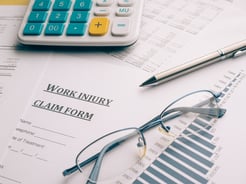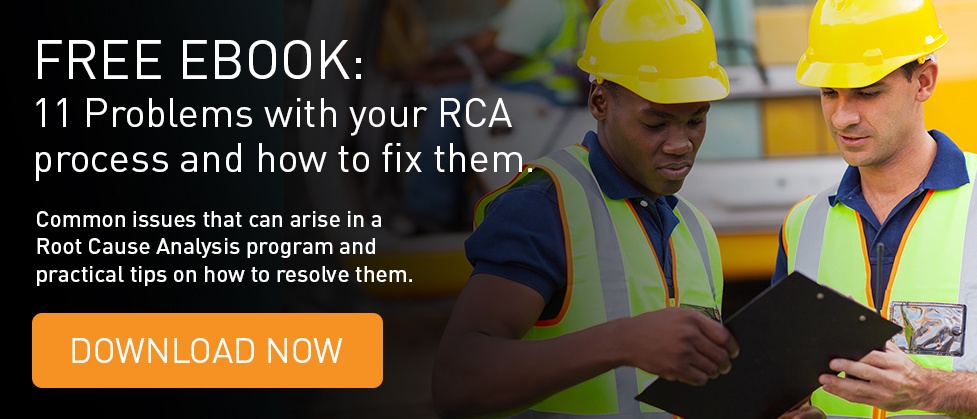According to a definition applicable to the insurance industry, an accident is an event which is not deliberately caused and which is not inevitable[1]. A typical insurance policy has a significant number of exclusions that are the “evitable” circumstances.
Logically, any situation which is reasonably evitable and which likely has harmful consequences ought to have been identified.
Those of us who are the safety leads at our organizations have a lot riding on our shoulders. That pressure gives us a constant incentive to improve, because we can never do our job too well. This post highlights some of the questions we ask ourselves that ultimately ladder up to the larger question, “How can we do better?”
For example:
 1. How many injuries have been recorded at your location(s) in the past year?
1. How many injuries have been recorded at your location(s) in the past year?
The often cited adage “you can’t manage what you don’t measure” is pertinent here.
Data is king; knowing how many injuries have been recorded at all locations for your enterprise will not only enable comparisons between sites and an analysis of the common and different causes, but also can be used to motivate greater improvements at the lesser site(s).
2. Does that number include the near misses? Or aren’t they reported?
The expression “near miss” clearly indicates a close call, but all too frequently it occasions relief rather than analysis. This is because people look on the bright side and put the escape down to good luck. Overcoming this complacency is a challenge. The issue for the organization is that all too often these events are simply not reported, or reported too long after the event to enable an accurate re-construction of the event. This compromises the ability to derive any “lessons learned” that could generate appropriate improvements.
3. Would you know if the near misses hadn’t all been captured?
The simple fact is that “you don’t know what you don’t know”; this situation calls for a process of acknowledgement, if not reward, so that the incident participants have no fear of punitive measures being applied when they report the circumstances of the near miss. This necessitates the clear communication of a “no blame” philosophy. If employees feel that they will suffer some negative consequence they will be loath to volunteer information about the near-miss incidents.
4. Is your record improving?
Unless the data is being promptly collected, accurately recorded, and analyzed, trending will not be possible and improvement not apparent. The objective is to have a demonstrable improvement evidenced by the statistical record. The accuracy of this data will depend not only on the creation of the “no blame” culture but also on the refinement of the methodology and tools employed in the investigation of incidents.

5. Have you set targets for improvement?
Establishing fresh targets and goals periodically is the only way to ensure the improvement is continuous. Even a site with an almost blemish-free record needs to be totally vigilant about the changes that are being undertaken there. Change is the only constant and, regretfully, is also an opportunity for hazards and harm to arise. The fresh targets ought to be reflected in the key performance indicators (KPIs) applicable to the respective safety roles for your enterprise.
6. Are there any unidentified hazards facing the personnel?
Only systematic inspection and auditing processes will reveal previously unrecognized hazards. The certainty that you have minimized risks and hazards will grow proportionally as the employees who encounter the hazards demonstrate their ownership of the safety program. They have the ultimate control of the likely causes of their own potential harm. But whether the personnel have accepted ownership of the program or not, it is incumbent on the responsible officer to implement the specific hazard identification process. This will necessitate close engagement with the plant or equipment operators, technicians, or any person with an exposure to their work environment. Yes, that’s everybody.
There are also hazards of the interpersonal type that may never be apparent to the observer; bullying and stress are increasingly the causes of substantial claims for compensation and can only be detected by building a trusting relationship with the personnel and developing confidentiality protocols.7. How effectively are you learning the lessons from each “accident”?
The parlance “lessons learned” is commonplace but not consistently applied. These are words that express an intention to make improvements in the organization but all too often focus on the actors in the event rather than the systems and processes that are central to the business.

“Human error” is the categorical expression most commonly heard when blame is being attached and represents a plethora of mistakes that humans make. Discovering that precise error in this unique event and the reason(s) for it can add value and lead to preventive measures being implemented -- but not in isolation, not as the so-called “root” cause.
Perfect knowledge, perfect understanding, and perfect operation by all humans in the enterprise are a fantasy. Humans are fallible and accidents will happen if the situation exists.
8. Which causes are “evitable”?
The “evitable” causes are simply the known, designed, or planned components of the situation – the hardware, equipment, systems, and processes that are used in the production of the goods or service in question. These are all possible causes which, with a human interface, can create hazards with potential negative safety consequences. They are the opportunities for establishing controls or installing barriers that prevent harm.
The safety program needs to identify improvements to the systems or equipment, which would at least minimize the likelihood of a repeat occurrence given the fallibility of the human factor. What are the possible failure modes or the mis-operations that could occur?
9. Can you demonstrate that you have thoroughly and methodically analyzed every event in order to prevent recurrence?
A thorough and methodical causal analysis is not possible without the creation of a cause map. This is best achieved through a mediated process involving the pertinent stakeholders and subject matter experts and identifying and arranging the proven causes in a logical manner. It needs to be both comprehensive and comprehensible to win the confidence of the decision makers who are looking for recommendations that will effectively modify, substitute, or eliminate the causes.
There are regulatory authorities that have expectations in this sphere and will want to see the assiduous application of a method that has proven to be effective regardless of the industry or problem-type.
[1] http://www.businessdictionary.com/definition/accident.html#ixzz3QpGESuXU
ARMS Reliability is here to help you answer these questions. Our free eBook "11 Problems With Your RCA Program And How To Fix Them" is a great first step to figuring out “How can we do better?” Download it here.


